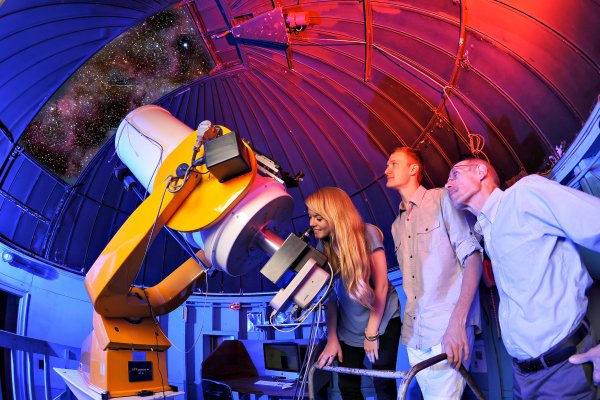Nuclear and Particle Physics
Investigating the smallest entities in the universe.
All known matter on earth and in the wider universe is made of elementary particles, and this experimental research program seeks to learn more about their fundamental properties.
The best known description of this matter is known as the Standard Model of fundamental particle physics. But this model is known not to be the “final answer” — the model includes too many numbers and conservation laws for which there is no fundamental theoretical explanation. Other theories will soon come forward as more comprehensive models; string theory and supersymmetry are two of the most promising among these theories.
Each of Valpo’s nuclear and particle physics experiments tests the limits of the Standard Model to learn where and how it is inadequate, incomplete, or even wrong. Since 1983, Valpo students have participated actively in this research.
Valpo’s recent and ongoing experiments include:
- The STAR-spin Experiment (RHIC-STAR)
- The TWIST Experiment (TRIUMF 614)
- The Crystal Ball Experiment (BNL 913)
- The Neutron EDM/MDM Experiment (NIST)
- The NuSea Experiment (FNAL 866)
- The MEGA Experiment (LAMPF 969)
In each of these experiments, the Valparaiso University research group collaborates with physicists from other universities and national laboratories located in the United States and abroad. The size of these collaborations ranges from the Neutron EDM experiment with about a dozen physicists to the TWIST experiment with 25 physicists, and the STAR experiment on which there are over 550 physicists.
The experiments are carried out at particle accelerator and nuclear reactor facilities. At Valparaiso University, we analyze data, perform simulation studies, prepare and construct equipment, and faculty and students work together to uncover new insights into the structure of matter on the smallest of scales.
